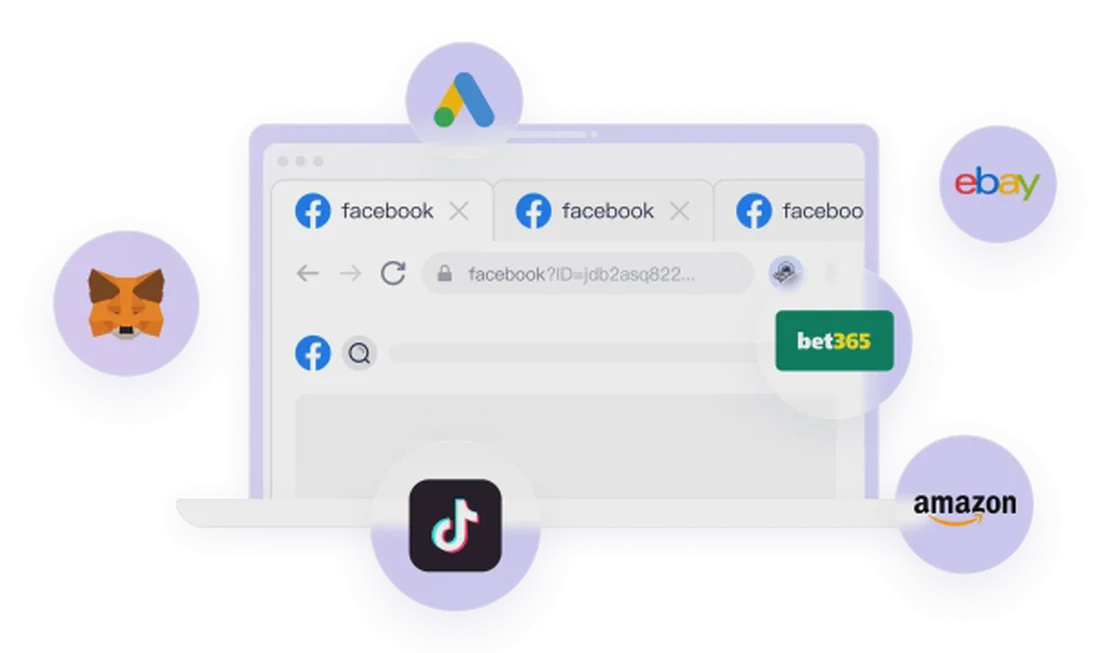Have you ever fantasized about a system that generates money while you sleep? Do you crave the freedom to work from anywhere, breaking free from the shackles of financial dependence? Over the past few years, we’ve witnessed countless waves of online wealth creation: Dropshipping, Amazon FBA, affiliate marketing… We chase one model after another, yet the stark reality is that most of us are left on the sidelines, watching others become the next millionaires.
Are we simply not smart enough or driven enough? A harsh truth: it’s not your fault at all. The reason you’re stuck, in what the video’s author calls the “Model Mismatch” dilemma, is that the blueprints you’ve been chasing were never designed for your current stage as a beginner. Imagine a novice at the gym trying to lift a professional weightlifter’s barbell or running a marathon pace on day one. The result would be nothing but injury and frustration. The business world is no different. Traditional dropshipping requires massive ad budgets for product testing; Amazon FBA demands significant upfront inventory investment; software development requires deep capital and expertise. These models aren’t inherently “wrong,” but they’re simply not for your career stage. They are not the right boat for your journey.
However, the scales of the world are undergoing a fundamental shift. The catalyst for this transformation? The most powerful lever of our era—Artificial Intelligence (AI). “The laziest people on earth are often the most successful.” This “laziness” isn’t about sloth; it’s an ultimate form of efficiency and intelligence. It means being keenly aware of every competitive advantage, looking for that small edge that allows you to achieve ten times the result with one-tenth the effort, then moving on to the next challenge. They aren’t lazy; they’re just smarter.
And AI is a competitive advantage that was once unavailable to the average person, now enabling everyone to compete on the same stage as multinational corporations. Now, it’s our turn to use it.

The Three Golden Rules of the “Lazy Model”
Any business opportunity can be evaluated through a simple framework: Risk, Scalability, and Reward. A truly “lazy” or efficient business model must satisfy all three criteria simultaneously.
- Scalability: This measures your ability to earn more money without proportional extra work. Imagine two bakeries. Bakery A needs more ovens, more flour, and more staff to serve more customers. Bakery B has a “magic recipe” that automatically duplicates the dough, allowing it to serve hundreds or even thousands of customers with the same ingredients. Unquestionably, B’s model is scalable. Your business must be Bakery B, not a manual grind.
- Low Risk: Ideally, the vehicle you choose as a beginner should require minimal upfront investment and complexity. “There is no such thing as a free lunch, only an easier one.” You shouldn’t risk everything on an uncertain future. Zero-cost or low-cost trial-and-error is the lifeline that allows you to stay in the game.
- High Reward: Does the business have real upside potential? Look for models with a high-reward profile that will generously compensate you for getting things right. Mediocre returns deserve mediocre effort, while a “lazy model” should offer the potential for exponential growth.
Let’s measure these old models against our yardstick:
- Dropshipping: Moderate scalability (ad costs and market saturation are constant bottlenecks), extremely high risk (a winning product can become obsolete overnight, new competitors emerge), and low reward (after all costs, net margins are razor-thin).
- Amazon FBA: Shares many of the same issues with dropshipping, facing significant risks from supply chains, inventory policies, and competition.
- Software: Incredibly high scalability, but also comes with very high upfront costs, technical risks, and uncertainty.
So, is there a model that hits all three marks—high scalability, low risk, and high reward? Yes. Some call it “Digital Products 2.0.”
The “Lucky Wheel” Game: Embracing Digital Products 2.0 with AI
Think of a game with a spinning wheel divided into many red slices. When you land on it, it can randomly turn one of a few colors. Your goal is simple: spin the wheel as many times as you can until it lands on “green,” representing success. The best part is you get unlimited spins. The only way to lose is to stop spinning. Every red slice costs you nothing because you can simply try again. Digital Products 2.0 is exactly like this game.
Before AI, creating a high-quality digital product (a video course, an ebook, training materials) was a long, expensive, and expertise-intensive process, taking months and costing millions.
But in 2025, everything has changed. With AI, this cost has been minimized, and the time frame has shrunk from “months” to “minutes.”

Three Steps to Build Your AI Digital “Money-Making Machine”
Here is a clear, three-step system to turn AI into your product-creation engine.
Step 1: Identify Profitable Opportunities - Find Your “Sweet Spot”
The biggest mistake most people make is positioning their product in a “red ocean,” a market saturated with competition. You need to apply the “Third-Layer Theory,” going beyond broad niches and drilling down into a unique value zone. The more specific, the better.
Instead of competing in the broad “productivity” space, focus on “how to reduce screen time as a self-employed professional.” Instead of targeting the “fitness” niche, go for “solving knee pain during long runs for marathoners over 50.” Notice how specific these are? The deeper you go, the less competition you face, and the more desperate your audience will be for your solution, as it’s tailor-made for them.
Where to find ideas?
- Go to the marketplace: Browse platforms like Gumroad, Etsy, and Kajabi to see what’s selling and what’s popular.
- Follow the winners: Follow accounts like
Walmadeon Twitter/X, which tweets every time a digital product crosses the $100,000 sales mark, proving the massive potential of this market.
Step 2: Synthesize Information - Let AI Be Your “Super-Researcher”
A few years ago, you had to be an expert or spend months conducting research. Today, AI is your sharpest weapon. You can skip the grueling R&D stage.
- Have AI sift through thousands of scientific papers, research books, and websites in minutes to distill the core points for you.
- Use specialized AI tools to scrape and analyze ClickBank and the Facebook Ad Library to cross-reference proven digital products that are already selling.
This two-pronged approach gives you a double guarantee: ① You’re building a product based on existing high demand, and ② You’re standing on the shoulders of giants, synthesizing all the world’s knowledge. This way, it’s almost impossible to fail.
Step 3: Productize - Turn Your Idea into a Sellable Asset
“Productizing” is the key to scalability. You create your product once and can sell it thousands of times.
For beginners, I recommend starting with something simple and low-cost, like an ebook.
- Validate the Concept: Create and sell your first ebook, aiming for your first 1-3 sales. This “proof of concept” is crucial; it confirms your direction is right.
- Iterate and Scale: Once validated, you can upgrade the same content into a more complex, higher-value product, like a video course, a membership community, or specialized software.
The best part? You don’t even need to show your face or use your own voice. The value of a digital product lies in the problem it solves, not who created it. Cyberflow Academy is a perfect example—a cybersecurity course created entirely by AI, with content quality that surpasses any single expert.

Scaling and Automation: From Solopreneur to a Business Empire
After you successfully “spin the wheel” and find your green slice, it’s time to amplify your success. This is where tools like FlashID come into play.
The core of Digital Products 2.0 is efficiency and scale. When you move from developing one course to managing multiple product lines across different niches and collaborating with hundreds of micro-influencers, a new challenge arises: how do you manage your matrix of online identities without them being linked and flagged by platforms?
For example, you might need:
- Primary Identity: To appear on your personal brand website and social media as an expert or team, posting authoritative content to build credibility.
- Promotional Identities: To use different “micro-influencer” style identities on Facebook groups, LinkedIn, and Reddit to post content, drive traffic, and engage with potential customers.
- Testing Identities: To create separate accounts for A/B testing different ad copy and audience personas.
If you manage these all from the same browser, their digital fingerprints (IP address, browser configuration, cookies, fonts, time zone, etc.) are identical. Ad platforms, social media, or payment gateways will instantly recognize this as an “account farm,” potentially throttling, warning, or permanently banning your primary identity and all associated activities.
FlashID Browser is designed specifically to solve this core pain point of scalable operations. It’s not just a simple tab manager; it’s a professional-grade “Digital Identity Operating System” and the command center for your online business empire.
- Create an Independent “Digital Dossier” for Every Project: With FlashID, you can create a completely isolated, highly secure browser profile for every online identity—be it your main brand or a promotional micro-influencer account. Each profile has a unique digital fingerprint, making it appear to platforms as a separate, real user from a different part of the world. This level of physical isolation is the ultimate defense for protecting your digital assets and preventing mass bans.
- Automate Workflows and Free Up Productivity: When you need to perform repetitive tasks across multiple identities (e.g., posting the same promotional content on 10 different social accounts), FlashID’s RPA (Robotic Process Automation) feature becomes your super-assistant. You can write a script to automate the entire process—logging in, posting, engaging, and more. This frees you from tedious, manual “grunt work,” allowing you to focus on high-level strategy and product innovation, achieving true “laziness through efficiency.”
- Seamless Coordination and Management: FlashID’s Synced Tabs feature allows you to easily switch between different identity windows, with all states preserved. This is incredibly useful for testing how different identities respond to the same content or for coordinating promotions across multiple platforms, like a conductor precisely orchestrating your entire online matrix.
In summary, the philosophy of “Digital Products 2.0” provides you with the “smartest boat” on the path to success, letting you sail on the sea of highest returns with minimal risk. FlashID is your indispensable navigation and escort system on this vast digital ocean. It not only allows you to securely manage your multiple “digital avatars” but also, through automation, lets you focus on the core task of “spinning the wheel” itself, maximizing the leverage of AI and truly building your own automated, wealth-generating system.
Frequently Asked Questions (FAQ)
Q: How should I correctly understand the meaning of this “laziness”?
A: This “laziness” refers to ultimate strategic efficiency—avoiding wasting time on low-value labor and instead using technology and leverage (like AI, FlashID) to achieve maximum output with minimal input.
Q: Can a tech novice learn to create digital products with AI?
A: Yes. Modern AI tools (which primarily use text commands) are very beginner-friendly. The learning curve has been significantly reduced. The key is learning “Prompt Engineering.”
Q: Will customers complain if the product isn’t made by an expert?
A: The value of a product lies in “whose problem it solves,” not “who made it.” As long as the content is practical, effective, and validated, customers care if “it works,” not if “you’re an expert.”
Q: How can I upgrade an ebook into a video course?
A: Break the book’s chapters into video modules. Use AI to generate scripts and assets. Use AI voice and editing tools for production. Your main role is “director,” reorganizing and visualizing the content.
Q: What is the key challenge of the “Influencer Arbitrage” model?
A: The key is precise matching—finding micro-influencers (KOCs) whose audience demographics align perfectly with your product’s target customers, and building trust for a win-win partnership.
Q: How can I manage multiple digital product brands in different niches?
A: You can use a “Niche Matrix” model, creating an independent brand for each niche. Use FlashID to create a separate digital identity for each brand to manage its social media, ads, and community, preventing cross-contamination.
Q: Can I use FlashID to manage ad accounts on multiple platforms?
A: Yes. Combined with RPA, you can build an automated ad deployment system to automatically create campaigns, manage accounts, and monitor data across platforms (Google, Meta, etc.), drastically improving efficiency.
Q: Will payment platforms flag my account for using FlashID?
A: FlashID provides a unique, clean digital fingerprint for each payment account, effectively reducing payment platform risk and is crucial for protecting your cash flow security.
Q: What if several of my product launches fail in a row?
A: Failure is just data. You should review the product (topic, copy, channel), make micro-adjustments (test key features), switch channels, or seek feedback from target users to continuously iterate and improve.
Q: What other forms of digital products can AI help create?
A: You can create AI-driven tools/scripts, personalized content subscription services, interactive AI virtual assistants, and AI-generated asset libraries (icons, sound effects), among others. The forms and potential are being endlessly expanded.
You May Also Like
